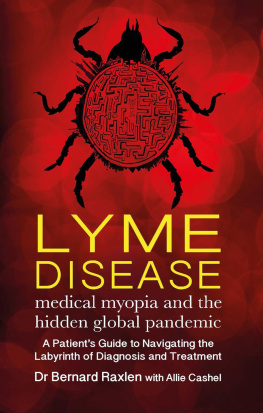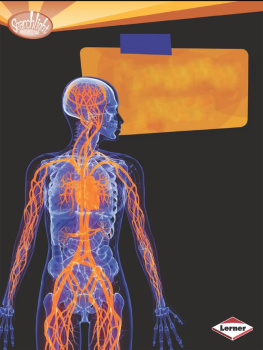
What is the Guilty Germ?
What do you get when you combine evil microbes trying to harm the circulatory system and a super detective skilled at Body System Disease Investigations? You get crime-solving super sleuth Annie Biotica! Join Annies team: Read the case, check out a line-up of disease suspects, test the body system for infection, and help Annie crack the case. These engaging and easy-to-read books use the scientific method to decipher symptoms and diagnose and treat diseases. Some cases must be solved by you!
About the Author
Michelle Faulk has a PhD in virology and microbiology from the University of Pittsburgh School of Medicine. She has worked as a medical researcher, teacher, and editor, and is currently an author.
THE CASE OF
the
Infected Tick
During a summer camping trip in Maine, twenty-five-year-old Eric decided he hated bugs. Especially the tiny ones that stick to your skin. Two months later Eric would hate those bugs even more.

Image Credt: Shutterstock.com
In early September, Eric began feeling dizzy and short of breath. When his doctor listened to Erics heart it seemed to be skipping a beat. The doctor performed an ECG (electrocardiogram). This test can show if the heart is working properly.
Erics ECG showed that the electrical signal from the top of his heart was not reaching the bottom of his heart. Because the bottom of Erics heart was not contracting, the heart was skipping a beat. This is called a heart block.
Why did this young, healthy man suddenly have a heart block? Many microbes can attack the heart. This is why I was called in to investigate.
Eric had had a complete physical back in April and his heart had been fine. He first experienced dizziness and shortness of breath on September 1. What had changed between April and September?
Eric said he got the flu on July 20. Many microbial attacks share the symptoms of flu. I continued to question Eric and found out about the camping trip in Maine. This was two weeks before he had symptoms.Then Eric told me about those annoying bugs. Now I had a suspect.
I showed Eric a series of mug shots. He positively identified the bugs that kept biting him as deer ticks. These bugs are also called black-legged ticks.
Eric said he had noticed a rash on his back after the camping trip. I showed Eric pictures of different types of rashes. He identified his rash as one called erythema migrans (EM). It looks just like a bulls-eye.
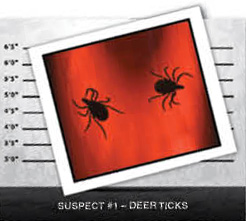
Image Credt: Shutterstock.com
Eric identified these deer ticks, AKA black-legged ticks.
Deer ticks, rash, and now heart problems. I believed that Eric had been attacked by a corkscrew-shaped bacterium named Borrelia burgdorferi. B. burgdorferi loves to hide in deer ticks. It causes Lyme disease. Lyme-infected ticks can be found in many parts of the United States. However, Maine is a hotbed of Lyme attacks.
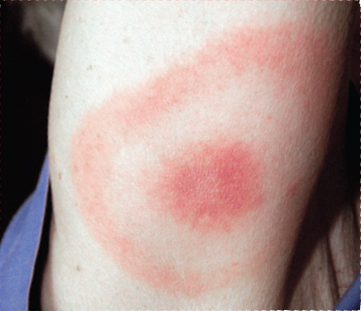
Image Credt: CDC/James Gathany
The picture shows an EM rash. Eric identified this rash as being the same as the one he had on his back.
These ticks are very tiny and may go unnoticed by the victim. The tick must be attached 24 to 36 hours for the B. burgdorferi to leave the tick and enter the person. Since Erics rash was on his back it makes sense he didnt know there had been a tick there.
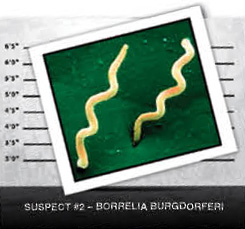
Image Credt: Juergen Berger
Lyme disease has three stages. Stage 1 is when the bacteria first enter the body and cause the EM rash and then flu-like symptoms. In Stage 2, the bacteria can begin to attack muscles, nerves, joints, and the heart. Months or years later the victim may enter Stage 3, when the bacteria have spread throughout the body.
Based on the infection timeline and Erics symptoms, I believed the victim was in Stage 2 of Lyme disease.
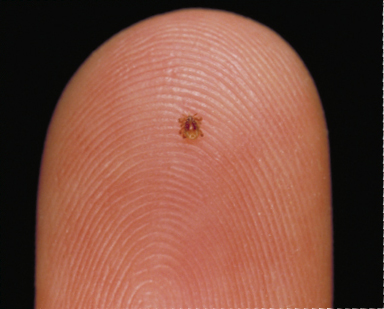
Scott Camazine
Deer ticks are very tiny!
As is usual with Lyme disease attacks, the health crime court accepted Erics exposure to ticks, his EM rash, and his particular heart problem as evidence of Lyme disease.
B. burgdorferi was convicted on all counts of causing Erics Lyme disease. This bacterium was sentenced to be eliminated.

Image Credt: Juergen Berger
CONVICTED GERM: Borrelia burgdorferi
Eric was given antibiotics for four weeks to kill any remaining B. burgdorferi bacteria in his body. Because Erics heart had been attacked by this bacteria he was kept in the hospital. Eric was a young man and got treatment early enough, so he was able to fully recover from his attack.

Image Credt: Illustrations by Jeff Weigel (www.jeffweigel.com)

Image Credt: Illustrations by Jeff Weigel (www.jeffweigel.com)
THE CASE OF
the
Dirty Needle (HIV)
When Daniel was twenty years old, he began using drugs. Eight years later Daniels family convinced him to give up drugs. Daniel went to a drug rehabilitation center for help. When he arrived he wasnt feeling well so he was sent to the hospital. Daniel may have quit drugs, but they were still killing him.

Image Credt: Shutterstock.com
When I met Daniel these were his symptoms:
- He had very little energy.
- He was nearly twenty pounds underweight.
- He often had fevers and sweats.
- He had several strange purple splotches on his skin.
The symptom that caught my attention was the purple splotches on Daniels skin. Most were flat but a few were raised up a little. They did not itch or cause him pain. I took a small piece of one and examined it under the microscope. I recognized the cells. The marks were Kaposi sarcomas.
Kaposi sarcomas are a type of cancer.
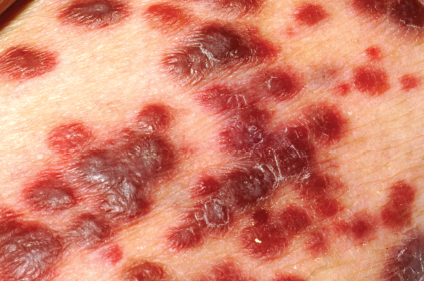
Image Credt: Illustrations by Jeff Weigel (www.jeffweigel.com)
The Kaposi sarcomas on Daniels skin
They are caused by the human herpes virus 8 (HHV-8). A healthy person can fight off HHV-8 attacks. There must have been something wrong with Daniels immune system if HHV-8 had gotten the best of him.
Next page


